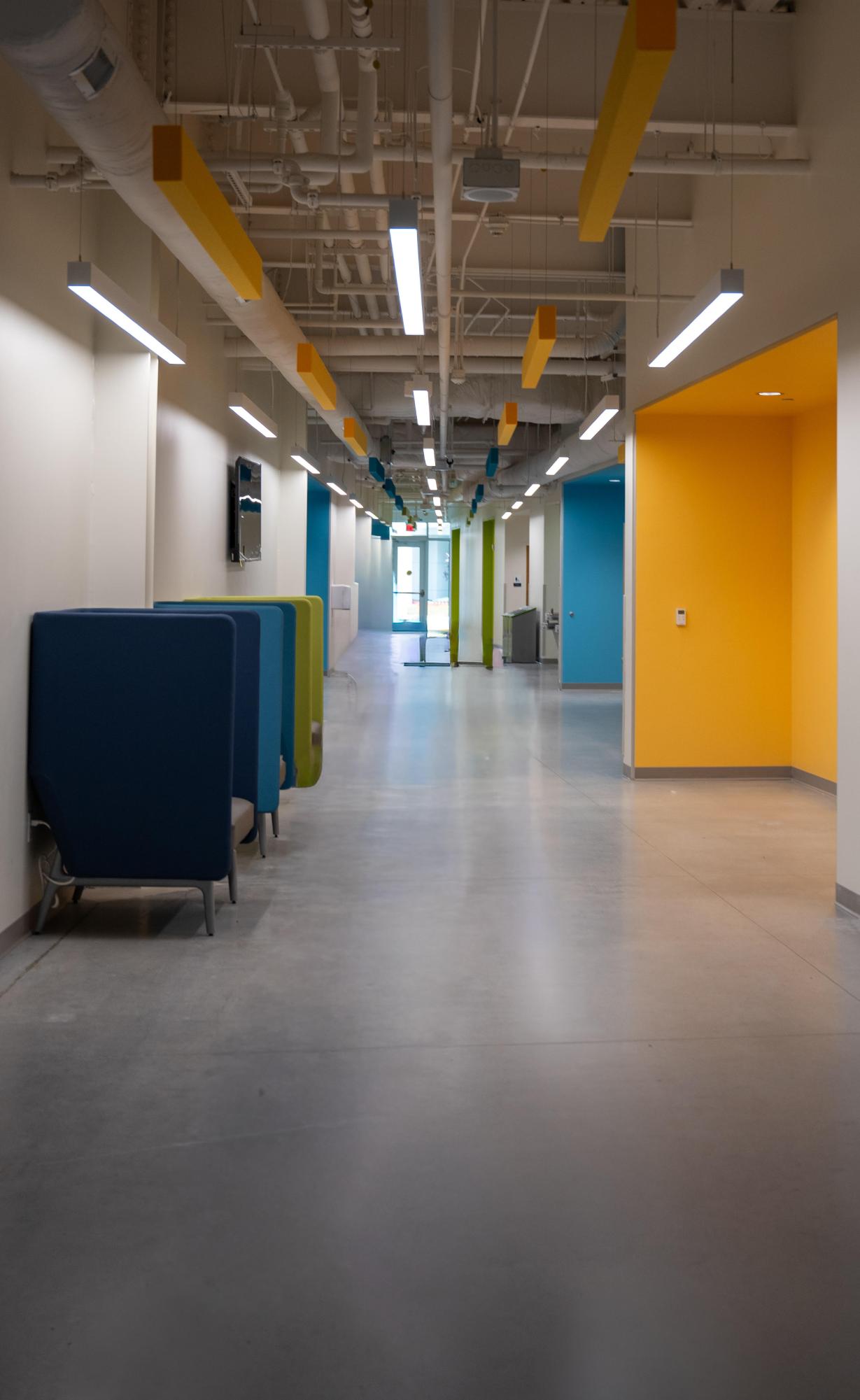When students walk into the Nochur Sankar Science Center this fall, they will not just see whiteboards, tables and projectors. They will find garage doors that open between classrooms, ceilings designed for swinging pendulums and an environment that stimulates the minds of all.
Designed to replace the aging Witmer Science Center, this new STEM building represents a major expansion in both size and purpose, spanning 33,000 square feet and eliminating limitations for students and teachers alike.
“The building is literally four times the size of Witmer,” Head of School Byron Lawson said. “The classrooms themselves are actually bigger. There are more labs. The expectation is that teachers are interacting with students in different ways.”
Although this new space takes the spotlight, Witmer isn’t disappearing. While its future role has not yet been finalized, the space will continue to serve a purpose on campus.
A primary design goal from the very start of the building’s planning process was to create an environment where collaboration can flourish.
“There are lots of spaces where students can congregate to work on things together,” Science Department Chair Romina Jannotti said. “For instance, there’s ‘learning stairs,’ where there’s a little alcove under the stairs, where five kids could sit around and work on coding problems … We’ve tried very hard to make the spaces open, airy and inviting for people who want to come in groups.”
Beyond open spaces, the building prioritizes flexibility, helping remove limitations and opening new possibilities for daily activities.
“(A) big problem with the chemistry lab (in Witmer) is that the tables are stuck to the ground,” Jannotti said. “We’ve tried to make the spaces as flexible as possible to give teachers infinite combinations of how they want to do things.”
Beyond flexibility, the design itself invites curiosity, with the inner workings of the building exposed to become part of the learning process.
“It looks very industrial,” Jannotti said. “You can see all the pipes and the plumbing. We wanted students who might want to go into engineering or architecture to be able to see the guts. A building is like a living organism. We tried to make sure that every space was a learning opportunity.”
Lawson hopes that this new design will encourage a new kind of mindset among students, one that is truly more experimental and bold.
“I think you’re going to feel differently about taking risks in that building than in other places and areas, and that’s the part I hope for,” Lawson said. “If you can’t be an entrepreneur, if you can’t learn those skills now, they’re going to be hard to just pick up when you guys go to college.”
This experimental frame of mind is supported by major lab upgrades and resources, including a biosafety level two designation for Trinity, something that is usually only found in university settings. This level allows students to work with more advanced materials and explore fields like microbiology, biotechnology and molecular biology.
“We have a lot of additional resources,” Jannotti said. “For instance, downstairs, there’s a deluxe biology lab that has a tissue culture hood that’s going to allow us to do biotech that we never were able to do before. Physics has hooks hanging from the ceilings.”
For Jannotti, however, these upgrades are more than merely bells and whistles. They are necessary to keep students looking forward and exploring new fields, career paths and opportunities.
“I think it’s important for every school to invest in modern facilities like these because science evolves,” Jannotti said. “You want to always have students looking towards the future, and you’re not going to do that with older equipment.”
While this investment certainly supports learning, it also helps the school stay relevant and appealing to future generations. As one of about 160 donors, current parent Vikram Ramprakash sees the new space as a vital part of Trinity’s growth.
“You basically have to keep up with the times,” Ramprakash said. “It’s going to attract kids as well as teachers. It’s an environment they want to teach in.”
But beyond innovation and education, Jannotti believes that what matters most is the lasting imprint that the Nochur Sankar Science Center leaves on the Trinity community and legacy.
“I hope (this building) instills pride,” Jannotti said. “Pride in what we do, pride in how we look, pride in what we produce.”



